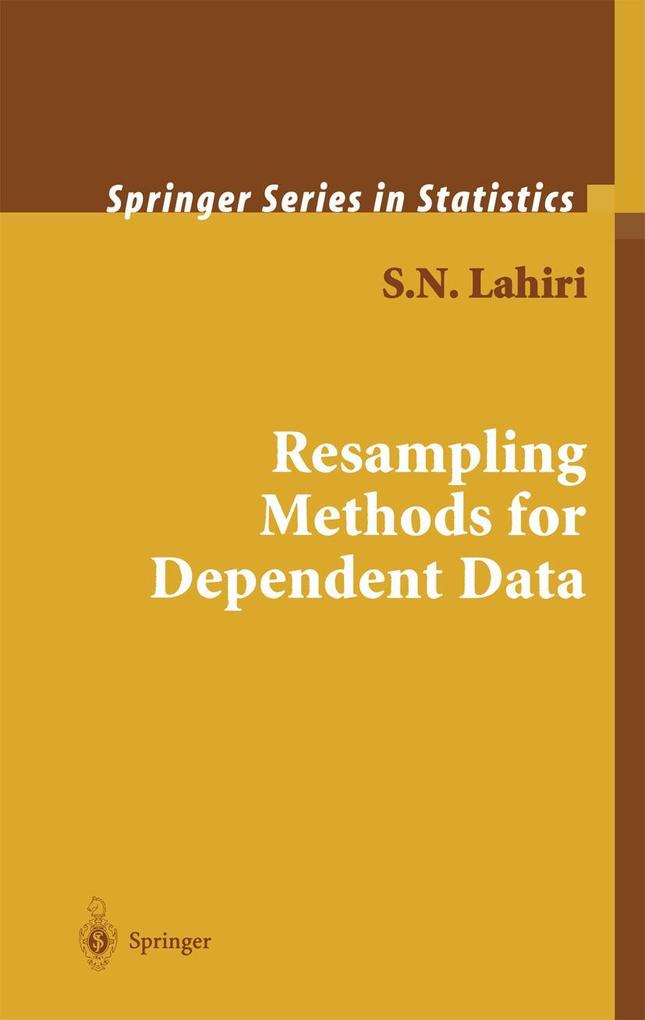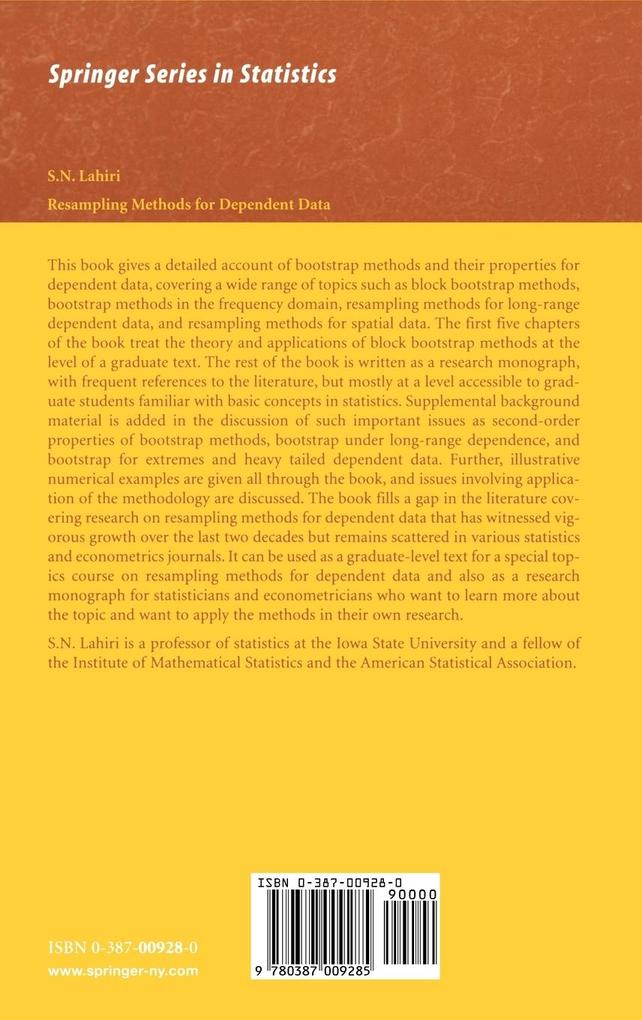
Zustellung: Mi, 23.07. - Sa, 26.07.
Versand in 7 Tagen
VersandkostenfreiBestellen & in Filiale abholen:
This is a book on bootstrap and related resampling methods for temporal and spatial data exhibiting various forms of dependence. Like the resam pling methods for independent data, these methods provide tools for sta tistical analysis of dependent data without requiring stringent structural assumptions. This is an important aspect of the resampling methods in the dependent case, as the problem of model misspecification is more preva lent under dependence and traditional statistical methods are often very sensitive to deviations from model assumptions. Following the tremendous success of Efron's (1979) bootstrap to provide answers to many complex problems involving independent data and following Singh's (1981) example on the inadequacy of the method under dependence, there have been several attempts in the literature to extend the bootstrap method to the dependent case. A breakthrough was achieved when resampling of single observations was replaced with block resampling, an idea that was put forward by Hall (1985), Carlstein (1986), Kiinsch (1989), Liu and Singh (1992), and others in various forms and in different inference problems. There has been a vig orous development in the area of res amp ling methods for dependent data since then and it is still an area of active research. This book describes various aspects of the theory and methodology of resampling methods for dependent data developed over the last two decades. There are mainly two target audiences for the book, with the level of exposition of the relevant parts tailored to each audience.
Inhaltsverzeichnis
1 Scope of Resampling Methods for Dependent Data. - 2 Bootstrap Methods. - 3 Properties of Block Bootstrap Methods for the Sample Mean. - 4 Extensions and Examples. - 5 Comparison of Block Bootstrap Methods. - 6 Second-Order Properties. - 7 Empirical Choice of the Block Size. - 8 Model-Based Bootstrap. - 9 Frequency Domain Bootstrap. - 10 Long-Range Dependence. - 11 Bootstrapping Heavy-Tailed Data and Extremes. - 12 Resampling Methods for Spatial Data. - A. - B. - References. - Author Index.
Produktdetails
Erscheinungsdatum
07. August 2003
Sprache
englisch
Auflage
2003
Seitenanzahl
396
Reihe
Springer Series in Statistics
Autor/Autorin
S. N. Lahiri
Verlag/Hersteller
Produktart
gebunden
Abbildungen
XIV, 374 p.
Gewicht
758 g
Größe (L/B/H)
241/160/27 mm
ISBN
9780387009285
Entdecken Sie mehr
Pressestimmen
From the reviews: "This book contains a large amount of material on resampling methods for dependent data a ] . the book is self-contained and therefore can be used as a text for a graduate level course in resampling methods; at the same time, the book is a valuable reference book for researchers. a ] This is a thorough book going into much detail a ] . an excellent book on resampling methods for dependent data which has filled a long lasting gap in the statistical literature." (Efstathios Paparoditis, Sankhya: The Indian Journal of Statistics, Vol. 65 (4), 2003) "I found this a useful book that organizes many scattered results in a reasonably concise form. The author states that this book has two main audiences, so the first five chapters are a pedantic introduction aimed at graduate students and the last seven a research monograph aimed at researchers in statistics and econometrics. a ] In summary, I learned quite a bit from reading this book and consider it a good reference book for the mathematically inclined." (D.J. Thomson, Short Book Reviews, Vol. 24 (2), 2004) "Bootstrap methods have seen vigorous growth over the past twenty years, and the book by Lahiri is extremely timely in its appearance. a ] The first five chapters are written in textbook style and this part is aimed at a postgraduate student audience. a ] The second part of the book (chapters 6 a" 12) is written in the form of a research monograph. It is therefore primarily aimed at researchers a ] . this is a well written book, containing a wealth of information a ] ." (Tertius de Wet, Newsletter of the South African Statistical Association, June, 2004) "This book is devoted to resampling methods fordependent data, which has been a fast developing area in about the last twenty years. a ] provides an introduction to the area of resampling methods for dependent data and also presents the latest results in the area with quite a long reference list. The first part of the book can be used as a textbook, while the second part, which focuses on the advanced results, can be really useful for researchers in statistics and econometrics." (M. HuAkovA, Mathematical Reviews, 2004f)
Bewertungen
0 Bewertungen
Es wurden noch keine Bewertungen abgegeben. Schreiben Sie die erste Bewertung zu "Resampling Methods for Dependent Data" und helfen Sie damit anderen bei der Kaufentscheidung.










